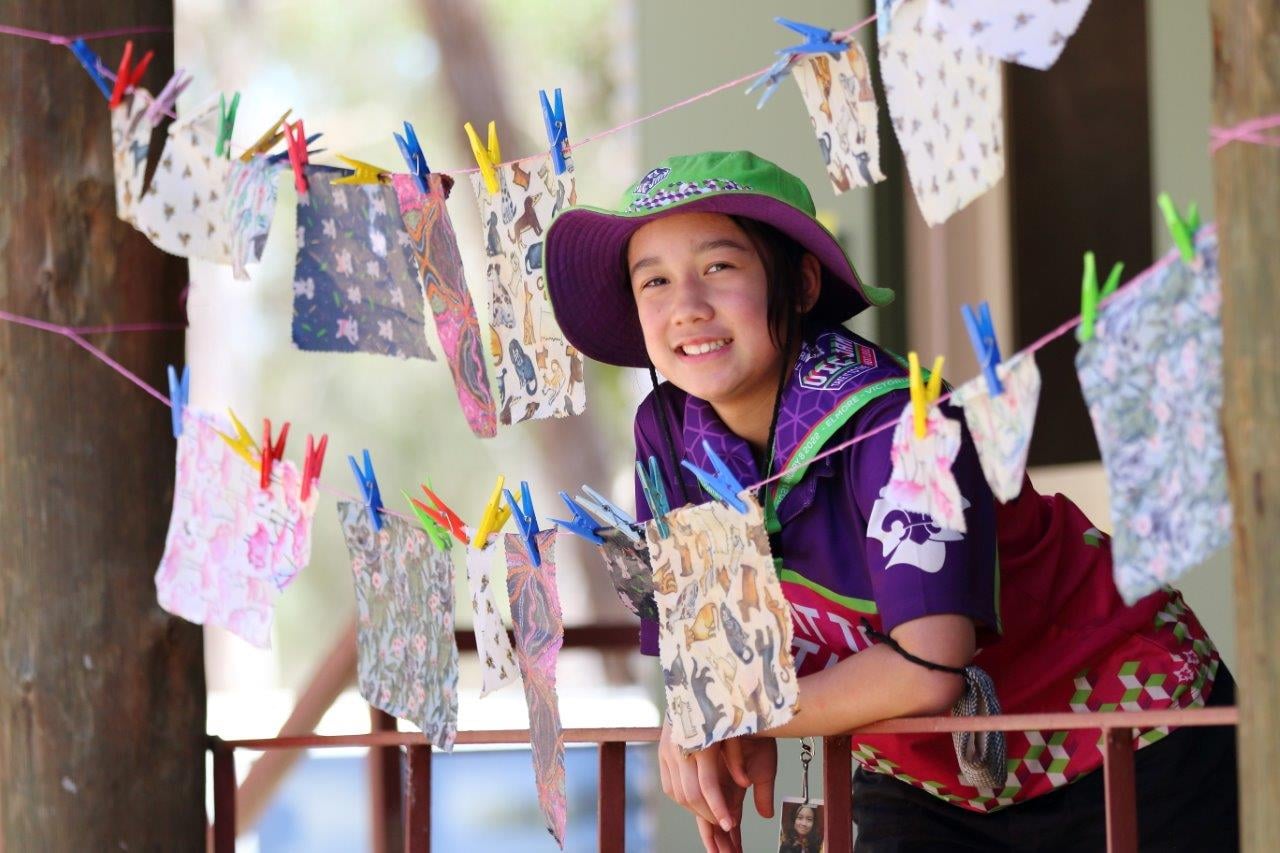Sustainable Food Storage
Introduction
Plastic pollution is one of the biggest environmental challenges we face today. Many of the plastics we use, like cling wrap, end up in landfill or the ocean, where they take hundreds of years to break down. In this activity, Scouts will learn how to make reusable beeswax wraps – a sustainable and eco-friendly alternative to single-use plastic wraps.
Youth in the younger Sections may need adult assistance with using an oven.
What you'll need
- Tables
- Newspaper (to protect the tables)
- Wooden panels, cork, or chopping boards (for placing hot jars)
- Fabric measuring tape
- Cardboard templates (33cm x 33cm)
- 50g of food-grade beeswax per participant
- 33cm x 33cm square of 100% cotton fabric per participant
- Baking trays
- Old paintbrushes (that won’t be reused)
- Pinking shears and scissors
- Stoves, ovens, oven mitts
- Large glass jars and metal pots (for double boiler method)
Before you begin
Start with a short discussion about plastic waste and sustainability:
- What happens to single-use plastics after we throw them out?
- How do plastics impact the natural environment?
- What are beeswax wraps, and why are they a good alternative to plastic wrap?
Activity
-
Melt the Beeswax
- Place solid beeswax into glass jars
- Set the jars in a double boiler and heat until melted
- Ensure the lids are secure to prevent water from getting into the wax
-
Prepare the Fabric
- Preheat the oven to 180°C
- Scouts choose their fabric and cut it to size using the cardboard template
-
Apply the Beeswax
- Lay fabric pieces onto baking trays
- Paint melted beeswax evenly over the fabric
- Ensure the edges are well covered
-
Heat and Set the Wraps
- Place baking trays in the oven for 1-2 minutes to allow the wax to fully absorb
- Remove trays using oven mitts
- Immediately hang wraps on a clothesline or gently swing them in the air to cool and set. (Use tongs if needed as the wax will be hot.)
Change the challenge level
Easier
- Pre-cut the fabric for younger Scouts
- Have an adult handle the hot beeswax and oven steps
Harder
- Experiment with different wax-to-oil ratios to create a softer or firmer wrap
- Use patterned or coloured fabrics to create unique designs
- Research how to add jojoba oil or pine resin to improve flexibility and stickiness
Reflection
Gather the Unit and discuss
- Would you do anything differently next time?
- If you had the choice between plastic wrap and beeswax wrap, which would you pick and why?
- After a few weeks, check-in: Who is still using their wrap regularly? Why or why not?
Wrap Maintenance
- If your wrap loses shape, place it between baking paper on thick cardboard and iron gently to remelt and redistribute the wax



